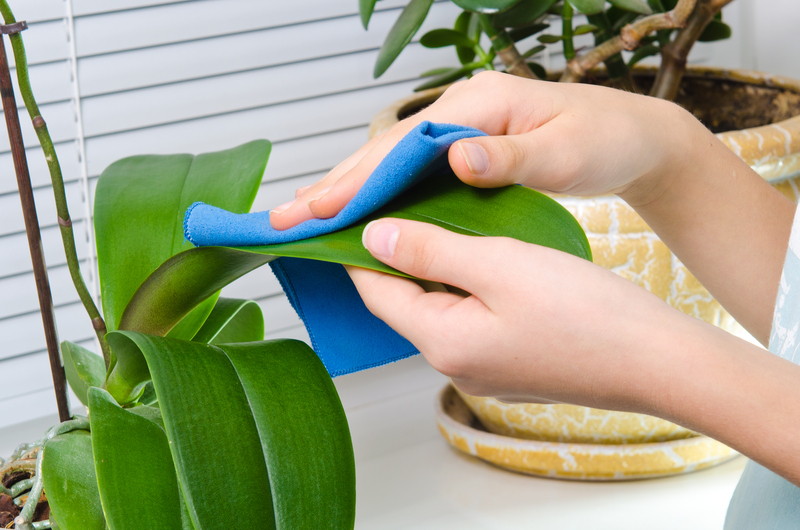Cleaning Techniques for Jewelry
Posted on 04/09/2025
Proper cleaning and maintenance of your jewelry are vital to preserving its beauty and longevity. Dust, dirt, body oils, and other substances can tarnish or damage jewelry over time. This article outlines several effective cleaning techniques to keep your precious items sparkling.
1. Basic Soap and Water Solution
One of the simplest and most effective methods for cleaning jewelry is using a mild soap and water solution. This technique works well for almost all types of jewelry, including gold, silver, and most gemstones.
How to Do It:
- Mix a few drops of mild dish soap in a bowl of lukewarm water.
- Place the jewelry in the solution and let it soak for 15-30 minutes.
- Gently scrub the jewelry with a soft-bristle toothbrush.
- Rinse with clean water and pat dry with a soft cloth.

2. Ultrasonic Cleaners
Ultrasonic cleaners use high-frequency sound waves to loosen dirt and grime from jewelry. This method is highly effective for metal pieces and sturdy gemstones but should be used with caution.
How to Use:
- Follow the manufacturer's instructions for filling the cleaner with water and cleaning solution.
- Place the jewelry in the cleaner's basket.
- Run the machine for the suggested amount of time.
- Rinse the jewelry thoroughly to remove any remaining cleaning solution.
3. Baking Soda and Water Paste
Baking soda is a natural abrasive that can clean tarnished jewelry and keep it looking new. However, this method is best suited for metal pieces and not recommended for soft gemstones.
Instructions:
- Make a paste using one part baking soda and one part water.
- Apply the paste to the jewelry using a soft cloth or brush.
- Gently scrub until the tarnish is gone.
- Rinse thoroughly and dry with a soft cloth.
4. Cleaning Silver with Toothpaste
Toothpaste can be an effective cleaner for silver jewelry as it contains mild abrasives.
Steps:
- Apply a small amount of toothpaste to a soft cloth or toothbrush.
- Gentle rub the silver surface.
- Rinse with warm water and dry with a clean cloth.
5. Professional Cleaning Services
If you're unsure about cleaning a valuable or delicate piece of jewelry, it's best to seek professional help. Jewelers have specialized tools and solutions to clean and inspect jewelry thoroughly.
Pros and Cons of Cleaning Techniques
Basic Soap and Water:
- Pros: Safe for almost all jewelry types, easy to do at home.
- Cons: Less effective on heavily tarnished items.
Ultrasonic Cleaners:
- Pros: Highly effective, saves time.
- Cons: Can damage delicate stones, expensive initial cost.
Baking Soda Paste:
- Pros: Effective for tarnish, inexpensive.
- Cons: Abrasive, not suitable for all stones.
Toothpaste:
- Pros: Works well for silver, readily available.
- Cons: Abrasive, can scratch gemstones.
Professional Cleaning:
- Pros: Expert care, thorough inspection.
- Cons: Costly, not as immediate as home solutions.
Tips for Maintaining Your Jewelry
- Regularly clean your jewelry to prevent buildup of dirt and oils.
- Store jewelry in a dry, cool place and use anti-tarnish strips for silver items.
- Avoid wearing jewelry during strenuous activities to prevent damage.
- Check settings and clasps regularly to ensure they are secure.

Key Takeaways
- Choose a cleaning method that suits the type of jewelry you have.
- Be gentle and cautious to avoid damaging delicate pieces.
- Regular maintenance can prolong the life and beauty of your jewelry.
Conclusion
Keeping your jewelry clean and well-maintained is not just about aesthetics; it also ensures the longevity of your precious items. Whether you opt for a simple soap and water solution or seek professional cleaning services, being knowledgeable about different techniques can help you make informed choices. Remember, routine maintenance, gentle cleaning methods, and proper storage can keep your jewelry sparkling for years to come.



